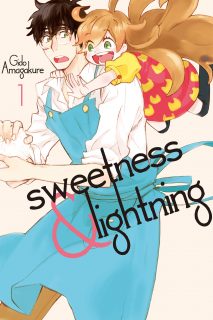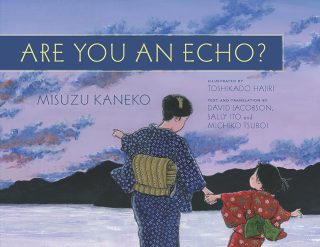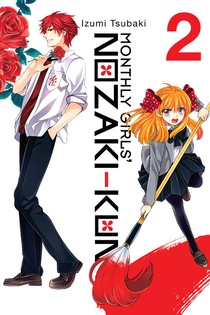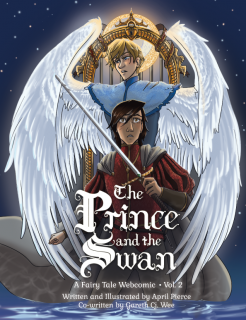My News and Reviews
Although I was finally around for most of last week (as opposed to traveling and being busy with family stuff and such like I was for previous two weeks), all that was posted in addition to the usual My Week in Manga feature was the monthly manga giveaway for October. Experiments in Manga is currently following a more relaxed posting schedule which, while it does still frustrate me that I’m not currently able to post more, is better than not posting anything at all. Anyway! There’s still time to enter for a chance to win the first two volumes of Gido Amagakure’s Sweetness & Lightning. All you have to do is tell me a little about your favorite dad or father figure from manga.
Seven Seas was celebrating its twelfth anniversary last week and announced a slew of new licenses including Yurino Tsukigase’s Otome Mania!!, Aikawa Shou’s Concrete Revolutio, Isaki Uta’s Generation Witch, Aoki Spica’s Beasts of Abigaile!, Nozomu Tamaki’s Don’t Meddle With My Daughter, Hachijou Shin’s Red Riding Hood and the Big Sad Wolf, Aosa Tsunemi’s Akashic Records of the Bastard Magical Instructor, Shiramine’s Tales of Zestiria, and Kabi Nagata’s My Lesbian Experience With Loneliness (which is probably the manga that I’m most curious about). Also of note, it looks as though Seven Seas might be getting back into the light novel game and the first print run of Kore Yamazaki’s The Ancient Magus’ Bride, Volume 6 will be accompanied by a booklet with a bonus chapter.
Not to be outdone, Yen Press announced three new acquisitions: Delicious in Dungeon by Ryoko Kui, the original novel, manga adaptations, and spinoff novel of Makoto Shinkai’s Your Name, and No Game No Life, Desu! by Yuu Kamiya and Kazuya Yuizaki. Also, Bento Books is preparing to release some more manga, including second volume of the Math Girls adaptation and the first two volumes of Female Math Major. After a bit of a mishap the first time around, the relaunch of Digital Manga’s most recent Kickstarter is well on its way to raise funds to release several of Osamu Tezuka’s short manga collections: Under the Air, Melody of Iron, and The Crater (which has its own history of mishaps separate from Digital Manga’s). Other Kickstarters that have recently caught my eye include the queer, supernatural, erotic comic Letters for Lucardo and the supernatural horror-comedy comic Not Drunk Enough.
Quick Takes
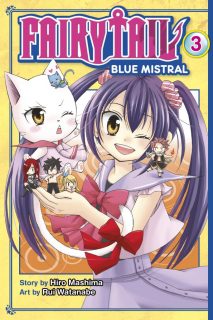 Fairy Tail: Blue Mistral, Volume 3 by Rui Watanabe. Out of all of the various Fairy Tail spinoffs (and to some extent even Fairy Tail itself), Blue Mistral is the manga that I’m most enjoying so far. I find this particularly interesting because out of all the series, Blue Mistral is the one aimed at a demographic farthest from the one that technically I belong to. I believe Blue Mistral is currently the only shoujo version of Fairy Tail (or at least is the only one to have been published in English at this point) and the magazine in which it was originally released is generally geared toward middle school girls. However, this audience is fitting for a series which follows Wendy Marvell, Fairy Tail’s twelve-year-old dragon slayer magic user. Although other characters from Fairy Tail do make appearances in the series, Blue Mistral is absolutely about Wendy and her adventures apart from the rest of the guild. In this particular volume, she spends much of her time posing as a boy for her own safety as she investigates the disappearances of a group of young women in the town of Aiya. After joining the town guard, she comes to discover that the circumstances are much more complicated than they first appeared. Romantic feelings play an important role in the story, but generally the romance occurs between characters who are not Wendy. Her heart does beat a little faster from time to time, though. Blue Mistral, even with all of the danger that Wendy must face, continues to be a generally upbeat, fun, and charming series.
Fairy Tail: Blue Mistral, Volume 3 by Rui Watanabe. Out of all of the various Fairy Tail spinoffs (and to some extent even Fairy Tail itself), Blue Mistral is the manga that I’m most enjoying so far. I find this particularly interesting because out of all the series, Blue Mistral is the one aimed at a demographic farthest from the one that technically I belong to. I believe Blue Mistral is currently the only shoujo version of Fairy Tail (or at least is the only one to have been published in English at this point) and the magazine in which it was originally released is generally geared toward middle school girls. However, this audience is fitting for a series which follows Wendy Marvell, Fairy Tail’s twelve-year-old dragon slayer magic user. Although other characters from Fairy Tail do make appearances in the series, Blue Mistral is absolutely about Wendy and her adventures apart from the rest of the guild. In this particular volume, she spends much of her time posing as a boy for her own safety as she investigates the disappearances of a group of young women in the town of Aiya. After joining the town guard, she comes to discover that the circumstances are much more complicated than they first appeared. Romantic feelings play an important role in the story, but generally the romance occurs between characters who are not Wendy. Her heart does beat a little faster from time to time, though. Blue Mistral, even with all of the danger that Wendy must face, continues to be a generally upbeat, fun, and charming series.
 Forget Me Not, Volume 4 written by Mag Hsu and illustrated by Nao Emoto. Although by and large I have been enjoying Forget Me Not, the third volume managed to frustrate me immensely. However, the fourth volume worked much better for me. Serizawa’s romantic relationships and attempts at romantic relationships continue to be utter utter wrecks (which considering the premise of the series is entirely expected), but at least he’s finally gained some more maturity and is able to begin to understand his own feelings. The fourth volume also delves into Serizawa’s family history which reveals some of the likely reasons that he has so much trouble forming relationships to begin with–raised by his mother after his father abandons them for another woman, he hasn’t really had a good model to follow. That’s actually something that I really appreciate about Forget Me Not. Many series which focus on romance and love tend to idealize them when in fact relationships of any sort take a tremendous amount of work. Serizawa is in the process of learning this, and it can be painful to watch as he not always successfully navigates his romances, but he is making some progress, slowly recognizing what he needs is not necessarily what the other person needs. What is missing from the fourth volume of Forget Me Not is its connection to the series’ hook, the reason why Serizawa is currently looking back on his disappointing love life; I’m hoping that the series will explore this again soon.
Forget Me Not, Volume 4 written by Mag Hsu and illustrated by Nao Emoto. Although by and large I have been enjoying Forget Me Not, the third volume managed to frustrate me immensely. However, the fourth volume worked much better for me. Serizawa’s romantic relationships and attempts at romantic relationships continue to be utter utter wrecks (which considering the premise of the series is entirely expected), but at least he’s finally gained some more maturity and is able to begin to understand his own feelings. The fourth volume also delves into Serizawa’s family history which reveals some of the likely reasons that he has so much trouble forming relationships to begin with–raised by his mother after his father abandons them for another woman, he hasn’t really had a good model to follow. That’s actually something that I really appreciate about Forget Me Not. Many series which focus on romance and love tend to idealize them when in fact relationships of any sort take a tremendous amount of work. Serizawa is in the process of learning this, and it can be painful to watch as he not always successfully navigates his romances, but he is making some progress, slowly recognizing what he needs is not necessarily what the other person needs. What is missing from the fourth volume of Forget Me Not is its connection to the series’ hook, the reason why Serizawa is currently looking back on his disappointing love life; I’m hoping that the series will explore this again soon.
 The Gods Lie by Kaori Ozaki. Even though it was never fully released in English, I loved Ozaki’s Immortal Rain (or Meteor Methuselah as it was originally titled). And so when The Gods Lie was licensed, I was understandably thrilled that I would have the opportunity to read more of Ozaki’s work. Other than the fact that I recognized the creator, I didn’t actually know anything about The Gods Lie. However, I was very happy to discover that it was just as beautifully drawn and emotionally resonant as Immortal Rain. Ozaki’s storytelling in The Gods Lie is just as strong if not stronger, too. It’s also a more mature work aimed at a more mature audience, seinen rather than shoujo. The Gods Lie is a heartwrenching and devastating manga. The themes that Ozaki explores with the work are pretty heavy and hard-hitting–death, abandonment, and desperation being some of the most prominent. But there’s also love and righteousness to be found. Interpersonal relationships and families, both good and bad, provide the manga’s center. The story takes place during a very limited span of time, primarily over the course of Natsuru Nanao’s sixth-grade summer vacation, but the events that occur will have a tremendous impact on the young man. Natsuru’s characterization is incredibly well done. In part The Gods Lie is a cutting coming-of-age story. Natsuru changes and matures in very believable ways, losing some of his innocence while gaining a better understanding of and dealing with some of the world’s more unfortunate realities.
The Gods Lie by Kaori Ozaki. Even though it was never fully released in English, I loved Ozaki’s Immortal Rain (or Meteor Methuselah as it was originally titled). And so when The Gods Lie was licensed, I was understandably thrilled that I would have the opportunity to read more of Ozaki’s work. Other than the fact that I recognized the creator, I didn’t actually know anything about The Gods Lie. However, I was very happy to discover that it was just as beautifully drawn and emotionally resonant as Immortal Rain. Ozaki’s storytelling in The Gods Lie is just as strong if not stronger, too. It’s also a more mature work aimed at a more mature audience, seinen rather than shoujo. The Gods Lie is a heartwrenching and devastating manga. The themes that Ozaki explores with the work are pretty heavy and hard-hitting–death, abandonment, and desperation being some of the most prominent. But there’s also love and righteousness to be found. Interpersonal relationships and families, both good and bad, provide the manga’s center. The story takes place during a very limited span of time, primarily over the course of Natsuru Nanao’s sixth-grade summer vacation, but the events that occur will have a tremendous impact on the young man. Natsuru’s characterization is incredibly well done. In part The Gods Lie is a cutting coming-of-age story. Natsuru changes and matures in very believable ways, losing some of his innocence while gaining a better understanding of and dealing with some of the world’s more unfortunate realities.
 Otherworld Barbara, Omnibus 1 (equivalent to Volumes 1-2) by Moto Hagio. Fantagraphics doesn’t currently have a huge line of manga (and sadly we may never see the rest of Takako Shimura’s Wandering Son translated), but the works it does publish are quality ones. I was very excited for the release of the first half of Otherworld Barbara; the manga was one of my most-anticipated titles for 2016. Although Hagio is a very influential creator in Japan, not much of her work has been published in English. I’ve loved everything that has been translated but have a particular fondness for Hagio’s science fiction. Otherworld Barbara is very much a part of that genre–it’s even one of the few manga to have won the Nihon SF Taisho Award–but it also includes strong elements of fantasy and the supernatural in addition to some significant family drama. Dreams, reality, past, present, and future all overlap with one another in Otherworld Barbara. Tokio is a dream pilot with the ability to enter other people’s dreams, gaining insight into their psyches in the process. Often he’s called upon to use his ability to help with criminal investigations, but more recently a group of researchers has asked him explore the dreams of a young woman who has been asleep for seven years. Surprisingly, his estranged son seems to somehow be tied to her case. The deeper Tokio probes, the more strange coincidences he uncovers, and the more dangerous the situation becomes for him and everyone else involved. I’m immensely curious to see how the story plays out.
Otherworld Barbara, Omnibus 1 (equivalent to Volumes 1-2) by Moto Hagio. Fantagraphics doesn’t currently have a huge line of manga (and sadly we may never see the rest of Takako Shimura’s Wandering Son translated), but the works it does publish are quality ones. I was very excited for the release of the first half of Otherworld Barbara; the manga was one of my most-anticipated titles for 2016. Although Hagio is a very influential creator in Japan, not much of her work has been published in English. I’ve loved everything that has been translated but have a particular fondness for Hagio’s science fiction. Otherworld Barbara is very much a part of that genre–it’s even one of the few manga to have won the Nihon SF Taisho Award–but it also includes strong elements of fantasy and the supernatural in addition to some significant family drama. Dreams, reality, past, present, and future all overlap with one another in Otherworld Barbara. Tokio is a dream pilot with the ability to enter other people’s dreams, gaining insight into their psyches in the process. Often he’s called upon to use his ability to help with criminal investigations, but more recently a group of researchers has asked him explore the dreams of a young woman who has been asleep for seven years. Surprisingly, his estranged son seems to somehow be tied to her case. The deeper Tokio probes, the more strange coincidences he uncovers, and the more dangerous the situation becomes for him and everyone else involved. I’m immensely curious to see how the story plays out.

